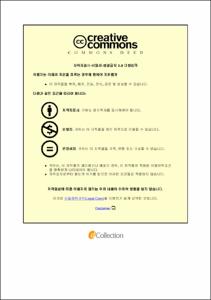담배연기 추출물에 의한 황색포도상구균 분비 단백체 연구
- Abstract
- 황색포도상구균(Staphylococcus aureus)은 급성 감염병의 주요 원인 병원체이지만, 만성 알레르기 질환과도 상관관계가 있는 것으로 알려져 있다. 특히, 황색 포도상구균이 분비하는 병원성 독소 및 단백질 중 staphylococcal enterotoxins (SEs)과 serine protease-like proteins (Spls)는 2형 염증반응을 유발하거나 악화시킬 수 있으며, SE-IgE (Staphylococcus aureus enterotoxin immunoglobulin E) 감작은 성인 천식의 유병률과 중증도와 밀접히 관련되어 있다. 특이한 점은 SE-IgE 감작이 비흡연자에 비해 흡연자에서 2배가량 흔하게 관찰된다는 점이다. 집먼지 진드기 등 알레르겐의 경우, 흡연 또는 담배 성분이 기도 상피세포를 자극하여 알레르기 감작을 유도하거나, 알레르겐의 항원성을 증가시키는 등의 기전이 실험연구를 통해 알려져 있다.
본 연구에서는 담배연기가 포도상구균에 직접 작용하여 SE 또는 Spl 등 2형 염증반응을 유발할 수 있는 독소 및 단백 분비를 증가시킬 가능성에 대해 실험 연구 방법을 통해 조사하였다. 가설을 검증하기 위해 질량 분석법 기반의 단백체 분석을 수행하여 in vitro 세균 배양 조건에서 담배연기추출물(CSE: cigarette smoke extract) 자극 전후 포도상구균 분비 단백체의 프로파일의 차이를 조사하였다.
사람의 비강에서 면봉 도말 방법으로 천식이 없는 대조군 12명과 천식환자 14명의 포도상구균을 분리, 동정했다. 분리된 포도상구균은 CSE 자극 유무에 따라 배지에 생장단계별로 3시간, 10시간 배양하여 원심분리 후 상층액 만을 얻어 단백체 분석을 수행했고 그 결과 총 487개 단백질이 동정 되었다.
분비 단백체 분석 결과, CSE 자극 후 황색포도상구균 분비 단백체의 프로파일은 다양한 방면으로 변화하는 양상이 관찰되었고, 대조군과 환자에서 얻은 균주는 정도는 다르지만 비슷한 방향으로 변화하였다. 또한, 대조군에서 분리한 균의 단백체와 환자의 균에서 분리한 단백체 프로파일은 CSE 자극 전에도 구별되었다. 본 연구에서 주요 관심 대상인 Spls의 경우, 건강 대조군의 균주 와는 달리 천식 환자의 포도상구균에서는 CSE 처리 전에도 관찰되었고, CSE 처리 후 유의하게 발현이 증가하였다.
본 연구 결과는 담배연기 추출물이 황색포도상구균에 직접 작용하여 Spl 등의 분비를 유도할 수 있음을 시사하며, 이 결과는 흡연력이 있는 환자에서 SE-IgE 레벨이 더 높다는 기존 역학 연구 결과에 부합된다. 나아가 흡연으로 인한 중증도 악화 기전에 Spls 단백질이 기여할 수 있음을 시사한다.
|Staphylococcus aureus (SA) colonization is positively associated with prevalence or severity of chronic allergic diseases. SA can drive type 2 inflammation by producing staphylococcal enterotoxins (SEs) and serine protease-like proteins (Spls); but these toxins and proteins may also act like allergens in patients with specific IgE. Interestingly, SE-specific IgE levels are significantly higher in more severe asthmatic patients with smoking history than mild asthmatics without smoking history.
We hypothesize that cigarette smoke exposure may directly interact with SA and increase the release of pro-allergic proteins. This study examined differences in SA secretome profiles before and after cigarette smoke extract (CSE) stimulation in vitro, using proteomic analyses.
We isolated SA in the nasal swabs obtained from 12 non-asthmatic controls and 14 asthmatic patients. SA was cultured in vitro for 3 or 10 hours, with or without CSE stimulation. Culture supernatants were analyzed for SA secretome using high resolution LC-MS/MS system Label-free MS1 quantification (Proteome Discoverer 2.2).
A total of 487 S. aureus proteins were identified. Principal component analyses showed that secretome profiles were distinct between patients and controls, but also markedly different according to CSE stimulation. Secreted SA proteins were up-regulated by CSE treatments (defined by p value < 0.05 and > 2-fold change) and belonged to different domains, including structure, metabolism, or virulence of the bacteria. Of note, SplD, a recently identified protein with pro-allergic effects, was only found in the supernatants of SA obtained from severe smoking asthmatics and were significantly increased by CSE treatment. Levels of other Spls, such as SplA, SplB, SplC, and SplF, were also similarly higher in the bacterial supernatants obtained asthmatics, or increased by CSE treatments.
These findings indicate the potential that cigarette smoke exposure may directly induce the release of pro-allergic proteins, such as Spls, from SA, which might help to explain previous epidemiological observations that SE-IgE levels were significantly higher in patients with smoking history. Furthermore, this suggests that the interactions between cigarette smoke exposure and SA may be involved in smoking-related severity or clinical outcomes of asthma.
- Issued Date
- 2022
- Awarded Date
- 2022-02
- Type
- dissertation
- Alternative Author(s)
- Lee Ji Won
- Affiliation
- 울산대학교
- Department
- 일반대학원 의과학과 의과학전공
- Advisor
- 송우정
- Degree
- Master
- Publisher
- 울산대학교 일반대학원 의과학과 의과학전공
- Language
- kor
- Rights
- 울산대학교 논문은 저작권에 의해 보호 받습니다.
- Appears in Collections:
- Medical Science > 1. Theses (Master)
- 파일 목록
-
-
Download
 200000604206.pdf
기타 데이터 / 1.85 MB / Adobe PDF
200000604206.pdf
기타 데이터 / 1.85 MB / Adobe PDF
-
Items in Repository are protected by copyright, with all rights reserved, unless otherwise indicated.